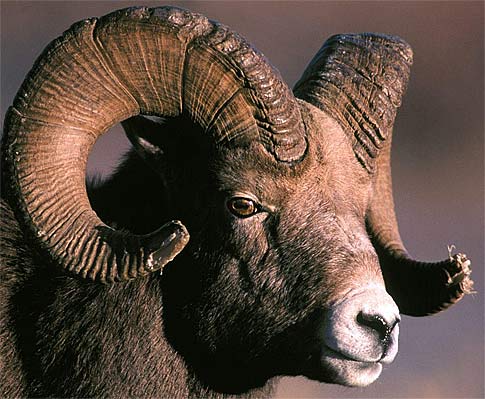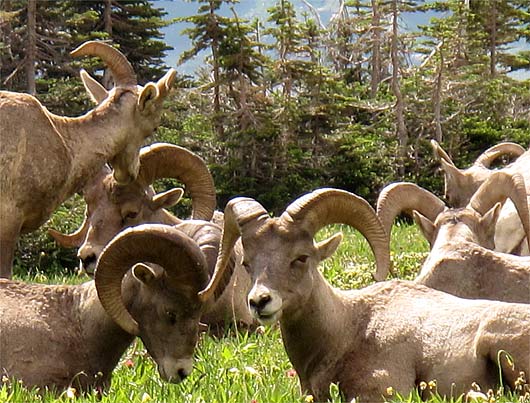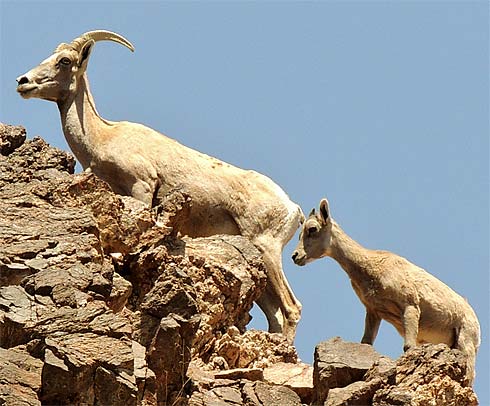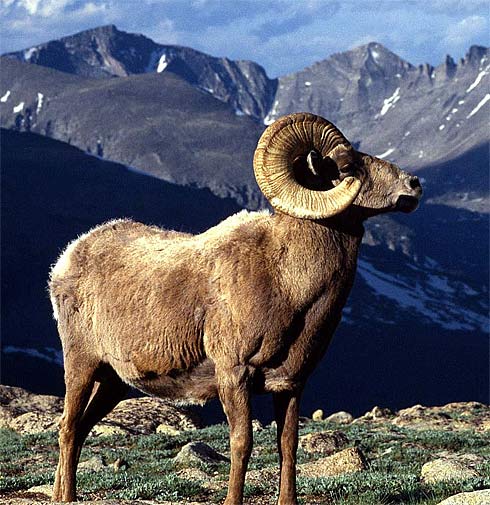Bighorn Sheep – Well-Tempered Horns, Scenic Habitation

Native to Northern Mexico, Western Canada, and parts of the United States that include: California, Oregon, Washington, Idaho, Nevada, Utah, Arizona, New Mexico, Colorado, Wyoming, Montana, North Dakota and South Dakota. Scientists divide up the species into up to 7 sub-species or more mostly split up by regions from the Mexican desert to the Canadian Rockies. The bighorn sheep is obviously known for the impressive horns that sit atop its head. Both the rams and the ewes (males and females) possess these horns but those of the ram are much more robust and noteworthy. What handsome, well-shaped, solid horns they are! No wonder the rams proudly and contently scan the mountain horizons. In fact, rams have been known to charge and defeat predators as big as mountain lions.

Bighorn sheep have been known to grow up to be as small as 75 pounds (34 kilograms) and 30 inches (76 centimeters) tall and as large as 500 pounds (230 kilograms) and 41 inches (100 centimeters) tall. The largest specimens of bighorn sheep tend to be found in the Rocky Mountain range while the smallest seem to be found in the Sierra Nevada. The sheep are known to live in flocks but do not follow a single dominant ram. Within these flocks, a male hierarchy begins to form around rut (mating season) to establish mating partners. This is when the horn smashing battles take place. Females may also fight each other for status within their flock.

Due to their living in high elevations and their need to avoid predators such as bears, cougars and wolves; these hooven creatures have adapted strong leg muscles and even stronger balance reflexes that allow them to function and graze on even the steepest of mountain sides. However, they still face the danger of falling rocks and the occasional slip. This majestic beast has faced extinction before but conservation efforts have made to ensure that the species survives.

